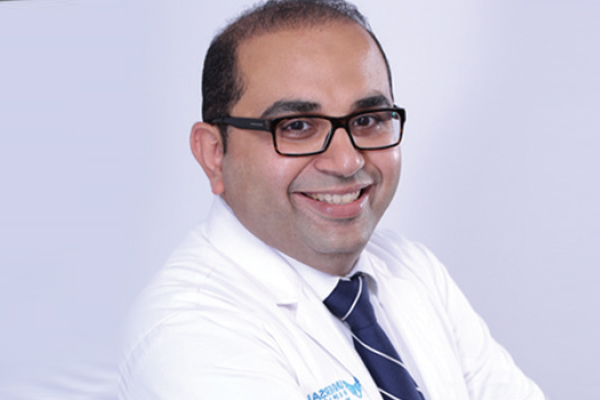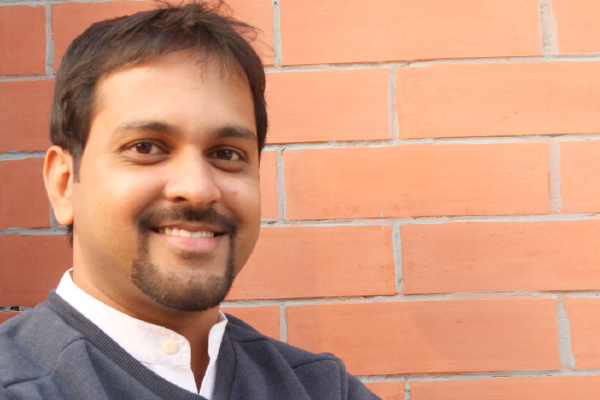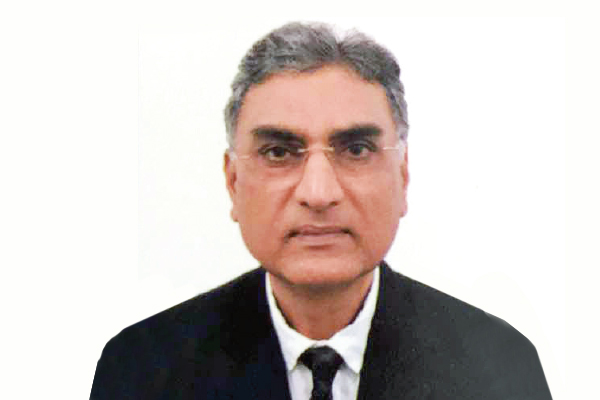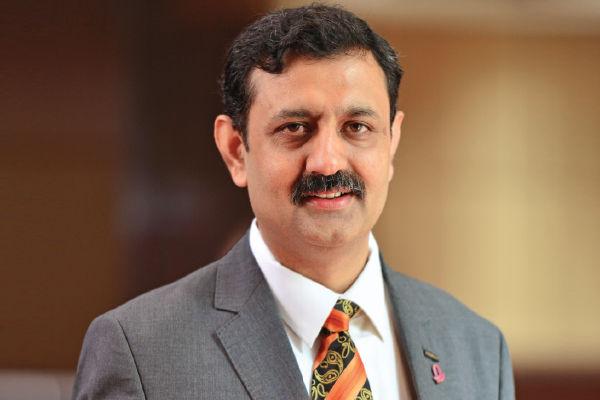
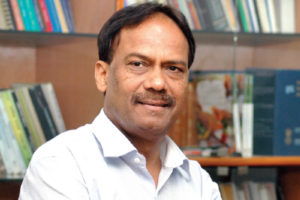 Health services are witnessing a paradigm shift in India with the government making tremendous efforts to close the existing gaps in healthcare delivery. The Directorate of Health Services under the Ministry of Health and Family Welfare is at the forefront of this revolutionary change by making health services more inclusive and affordable for the poor through a number of initiatives, says Dr Jagdish Prasad, Director General Health Services, Directorate of Health Services, in conversation with Shivani Tyagi of Elets News Network (ENN).
Health services are witnessing a paradigm shift in India with the government making tremendous efforts to close the existing gaps in healthcare delivery. The Directorate of Health Services under the Ministry of Health and Family Welfare is at the forefront of this revolutionary change by making health services more inclusive and affordable for the poor through a number of initiatives, says Dr Jagdish Prasad, Director General Health Services, Directorate of Health Services, in conversation with Shivani Tyagi of Elets News Network (ENN).
How is the Directorate of Health Services impacting the healthcare delivery in India?
The Directorate of Health Services is deeply impacting the healthcare delivery in the country. The directorate has played a vital role in the eradication of small pox, polio, yaws and kidney worm infestation. This all has been made possible by a robust health system. Even malaria, which was among the most threatening endemic diseases in India, is now on the verge of being eliminated in the country. We are also trying to eliminate leprosy at the district and block levels by 2018- 2020..

The Directorate not only implements health programmes, but also does the surveillance to find out the gaps, which can be filled by putting in place workforce and a proper monitoring system.
What steps have been taken up by the government to provide affordable health services to citizens?
Affordable healthcare can be provided in many ways. One of the ways was the National Rural Health Mission started by the Government of India in 2005. It has brought down the maternal and infant mortality rate tremendously. It provides incentives to women to get their delivery done in government institutions free of cost.
Other positive step in this direction is the provision of essential medicines. Under this programme, whatever money is required to purchase medicines by Primary Health Centres (PHCs) and district level hospitals to provide free drugs to the patients will be contributed by the Government of India, so that the patients in public hospitals can get the essential drugs free of cost.

Another initiative we have taken is the opening of affordable medicine outlets under the AMRIT (Affordable Medicines and Reliable Implants for Treatment) scheme in all the public hospitals.
Recently, the National Health Insurance Policy has been launched for more than 40 million families. Under this policy, every family will be given Rs 1 lakh of insurance for getting treatments done. For elderly people, Rs 30,000 more will be given as insurance and they can get their treatment done in any hospitals either private or government. The package is fixed by the government so that it becomes affordable for the poorest of the poor people to receive treatment.
 Which initiatives by you are directed towards addressing the growing burden of noncommunicable diseases in India?
Which initiatives by you are directed towards addressing the growing burden of noncommunicable diseases in India?
Non-communicable diseases“ especially cardio vascular diseases, diabetes, stroke and respiratory diseases”are causing more deaths than communicable diseases in India. Initially, we started a pilot project in 10 districts of the country to develop cardiac ICUs, scalding/cascading for blood sugar and hypertension. Then we started the project in 100 districts cascading for diabetes and hypertension. So far, we have screened about 60 million people including those above 30 years, pregnant women and those who have family history of coronary diseases, diabetes or hypertension.
Recently, the Government of India has also launched screening for three cancers “ the cervical cancer, breast cancer and ovarian cancer. The training of ASHA and ANMs has been started so that they can do the screening. Once any of the three most common cancers is suspected, the patients can be referred to a particular district hospital for diagnosis and treatment.
Another initiative we have taken is to eliminate rheumatic heart disease that is very common in our country. The Government of India has allocated Rs 120 crore to develop 20 state cancer hospitals in the country. The government has also provided Rs 45 crore to upgrade these hospitals. Rs 120 to 180 crore has been given to medical colleges to develop super specialties so that chronic noncommunicable diseases can be treated locally.
What are the technical aspects of Generic Medicine Code and its implementation?
Generic is a chemical name, like crocine is a brand name and paracetamol is a genric drug. We need to understand that before any drug acts on the body, the chemical has to undergo a process so that it can become effective. It means that to reach the target cells, its concentration in the blood should reach a particular level for it to be effective. But presently, the generic drugs made in the country are not doing the bio metric and bio efficacy tests which is a must. That is the reason why the Government of India has taken the decision that whosoever wants to manufacture generic drugs in the country they have to take bio metric and bio efficacy certification then only the generic drugs made by them can be accepted. We have this in our agenda that even retrospectively every generic drug manufacturer will have to have bio metric and bio efficacy certification and have to develop the system in three years otherwise they have to close their manufacturing unit.
Affordable healthcare can be provided in many ways. One of the ways was the National Rural Health Mission started by the Government of India in 2005. It has brought down the maternal and infant mortality rate tremendously. It provides incentives to women to get their delivery done in government institutions free of cost.
What is your vision to make healthcare more accessible and affordable for the citizens?
 Availability of doctors is a big challenge, especially in rural areas. To ensure the availability of doctors, the government needs to develop infrastructure in Primary Health Centres (PHCs) and Community Health Centres (CHCs) in rural areas. Presently, the infrastructure of health centres is in a very bad shape. Although a lot of fund has been given to states under the National Rural Health Mission to strengthen the structure of health system public hospital, still it hasnt come up to the level where it can be compared to any corporate facility. So, the important challenge is to develop good infrastructure for quality health services.
Availability of doctors is a big challenge, especially in rural areas. To ensure the availability of doctors, the government needs to develop infrastructure in Primary Health Centres (PHCs) and Community Health Centres (CHCs) in rural areas. Presently, the infrastructure of health centres is in a very bad shape. Although a lot of fund has been given to states under the National Rural Health Mission to strengthen the structure of health system public hospital, still it hasnt come up to the level where it can be compared to any corporate facility. So, the important challenge is to develop good infrastructure for quality health services.
The second area we want to focus on is medical education. Anybody who wants to start a new medical college, they should first run a 300-bedded hospital and at least for the first three years the facility should be uated on the quality of services being offered.
What are the technical challenges for implementation of the Clinical Establishment Act?
How can these challenges be addressed? The idea is to regulate the whole system of hospitals. We dont want to control corporate hospitals, but we want to regulate the system of treatment. The cost of treatment should be defined.
Today, it is very hard to know how much a hospital is going to charge when a patient is discharged. So, it needs to be regulated. The Clinical Establishment Act will allow us to have standardisation for healthcare facilities. For example, after its implementation if a hospital boasts of a neuro clinic it will have to ensure that it has all the basic facilities in place. The act will not allow a hospital to display a board of neuro research centre when it does not have the facilities of research.
Be a part of Elets Collaborative Initiatives. Join Us for Upcoming Events and explore business opportunities. Like us on Facebook , connect with us on LinkedIn and follow us on Twitter , Instagram.



